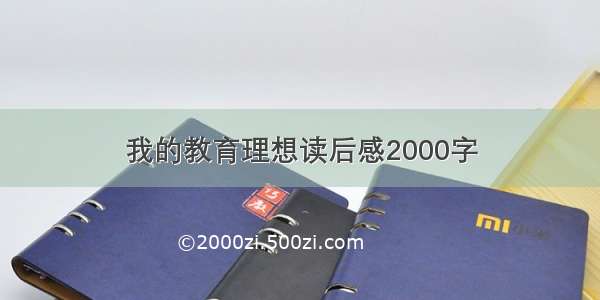
动态助词,dynamic auxiliary
1)dynamic auxiliary动态助词
1.The structure adjective+dynamic auxiliary‘了’is always a controversial one.“形容词+动态助词‘了’”结构一直是一个存在争议的结构,对于形容词能不能带动态助词、带上动态助词后词性有无变化的观点,还存在着很大分歧。
2.This article introduces the strategy of the computer automatically generated thedynamic auxiliary "le" in Chinese language.本文主要介绍计算机自动生成汉语中的动态助词“了”的策略。
英文短句/例句
1.Multidimensional Studies of “Adjective+Dynamic Auxiliary‘了’”;“形容词+动态助词‘了’”结构的多角度研究
2.Yandong dialect expresses the condition by adding auxiliary verbs to verb or verb phrases.延东土话中动态的表示主要是在动词和动词短语后加动态助词。
3.The"Verb+ ASP+ PP"Construction in Hunan Dialects;湖南方言中的“动词+动态助词+介宾短语”句型
4.The Usage Rule and Cognitive Interpretation of "le" as an Aspect Marker in Mandarin Chinese;动态助词“了”的使用规律与认知解释
5.Pragmatistic Meaning of Dynamic Auxiliary Verbs "着"(zhe) and "了" when Used Together;动态助词“着(zhe)”、“了”连用的语用意义
6.The Function of the Dynamic Auxiliary Word zhe(着) in The Second Volume of Strange Tales;“二拍”中动态助词“着”的功能探析
7.On the Substructures and Sequencing of Aspectual Particle guo(过)in a Pedagogical Grammar动态助词“过”的次结构与教学语法排序
8.Dynamic Auxiliary “dao_3[tau ~(44)]” and Verb-Complement-Structured 2nd Element “dao_4[tau~(44)]” in Xinzhou Dialect;新洲话的动态助词“倒”和动结式第二成分的“倒”
9.The Study on the Concealment Rules of the Aspect Particle Le and Its Application in Teaching Chinese as a Foreign Language;动态助词“了”的隐匿规律与对外汉语教学
10.Study on the Teaching of Aspect Particles lezheguo in Modern Chinese for Korean;现代汉语动态助词“了”“着”“过”的对韩教学研究
11.Changes of "Jiang(将) ",the Auxiliary Word of Tense in Ming and Qing Dynasties and Brief Remarks on Its Disappearance;明清时期动态助词“将”的发展演变及衰亡原因
12.modal auxiliary verb表动词语态的助动词
13.modal auxiliaryph.1. 【语】情态(助)动词
14.“yes/no” questions begin with an auxiliary or a modal.一般疑问句以助动词或情态动词开头。
15.Syntactical Uniformity between Modal Verbs and Auxiliaries;情态动词与助动词在句法中的同一性
16.infinitive particle(动词)不定式助词
17.With continuous tenses only, often between theaux and the mainv仅用於进行时态,常置於助动词与主要动词之间
18.Whave3, Bhave 2. As a present tense form of the auxiliary, Bhasbis often contracted toB"s用作现在时态的助动词时,常缩写为
相关短句/例句
dynamic auxiliary word动态助词
1.From the time,the Dynamic auxiliary words in "San Yan" are a connecting link between the Ancient Chinese and the Modern Chinese,so it will be significant to study the Dynamic auxiliary words in "San Yan".从时间上看,“三言”动态助词上承古代汉语,下启现代汉语,具有重要的研究意义,而“三言”现有的研究成果,大多都是考证其中篇目的来源或者是从文学思想层面研究的论著,从语言角度对“三言”进行研究的还不是很充分,对其动态助词的研究更少。
3)auxiliary word of tense动态助词
1."Jiang" is a newly generatedauxiliary word of tense in modern Chinese."将"是近代汉语中新产生的一个动态助词,萌芽于魏晋,形成于唐代,宋元时期得到充分发展,明清则开始走向衰落。
2.Theauxiliary word of tense de in Qiludeng,which serves to indicate the perfective aspect as well as the continuative aspect,emerged in Tang Dynasty,frequently used in Song Dynasty and came to shrink after Yuan,Ming Dynasty.《歧路灯》中“的”可以用作动态助词,表示动作的完成、实现或持续、进行,动态助词“的”出现于唐代,发展于宋代,元明以后在以北京话为代表的北方官话中已经萎缩,但在中原官话和汉语其他方言中还有不同程度的保留。
3.After the Yuan Dynasty(元) theauxiliary word of tense such as "Jiang(将)"、"Zhe(着)"、"De(的)" and so on had made some new developments that deserve attention both in their functions or usages.元代以后,“将、着、的”等动态助词无论在功能上还是用法上均有一些值得关注的新发展,这在由明人创作又刊行于明代的《金瓶梅词话》中得到了反映。
4)auxiliary verb动态助词
1.Yandong dialect expresses the condition by addingauxiliary verbs to verb or verb phrases.延东土话中动态的表示主要是在动词和动词短语后加动态助词。
2.The article researchesauxiliary verb “咖”、“哒”“咖哒”and“咖……哒”of chang sha dialect from four aspects of distribution、 tense、expression、semanteme characteristic and manner of speaking disparity.本文从语法分布、时态表现、语义特征、语气差异等四个方面研究长沙方言中的动态助词“咖”、“哒”、“咖哒”和“咖哒”。
5)auxiliary words动态助词
1.This article is intended to examine theauxiliary words in Qingpingshantang huaben which keeps more features of the Song and Yuan language.本文以保持宋元语言特点较多的《清平山堂话本》为语料,对其中的动态助词进行了研究研究过程中,用穷尽考察、定量分析的方法,比较细致具体地描写了《清平山堂话本》中动态助词的语法意义、语法功能,在此基础上兼用比较分析的方法,力求揭示出《清平山堂话本》中动态助词的特色,并探求其发展源流。
6)dynamic auxiliary word "dao"动态助词"倒"
延伸阅读
语助词1.指经常挂在口头的词语。 2.在语言中专门表示各种语气的助词。一般位于句末或句中停顿之处。也称语气词。
















